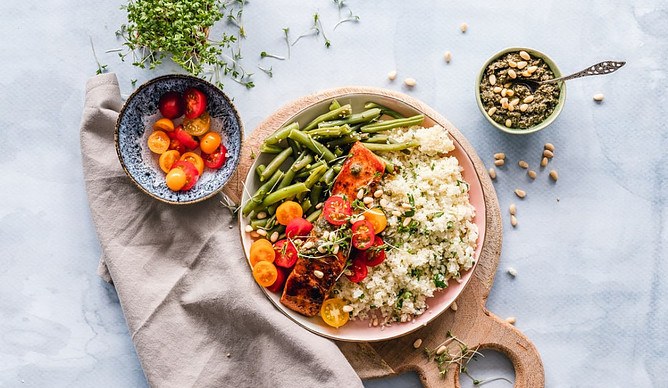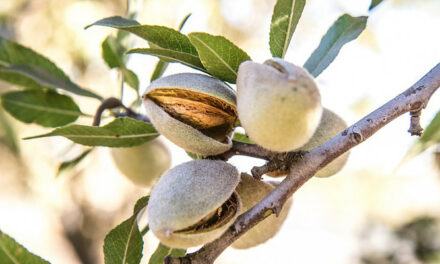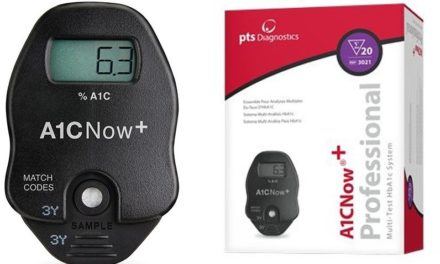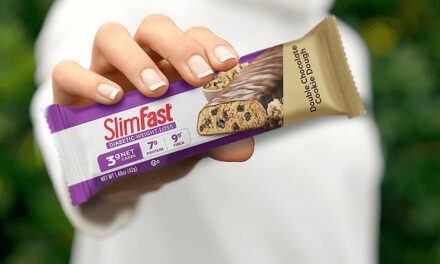Here we will cover the High Satiety Index and Low Glycemic Index Foods for Diabetics. What are High Satiety Index Foods? What are Low Glycemic Index Foods? What is the role of Satiety Index and Glycemic Index Foods in managing diabetes? are some of the key questions we will be answering in this article.
Let’s look to some background first… The food we eat…
Most of us eat food without thinking about it in today’s busy world. We eat food while in the car, check our emails, or even watch TV. But it is necessary to be mindful of how and what we eat is essential.
If you have diabetes, it is crucial for you to keep your weight down. Thus, paying attention to what we are eating is extremely important.
The best diet for people with diabetes incorporates many high-fiber foods. But always remember that you still have to watch portion size with foods. Eating certain foods and limiting others help people with diabetes manage their blood sugar levels.
People who are with type 2 diabetes may have multiple health issues. For instance, they might have hypertension, body pains, depression, dementia, etc. Therefore, a diet rich in fruits and vegetables can have significant benefits.
Finding out the best food when you have diabetes sometimes becomes tough. Thus, your primary goal should be to manage your blood sugar levels to keep things simple.
Similarly, always eat foods that help prevent diabetes complications like heart disease.
Consuming food with a high glycemic index for several years might result in excessive insulin secretion. It can also result in higher postprandial blood glucose concentration. Hence, all these things might contribute to the loss of the insulin-secreting function of pancreatic β-cells. Moreover, it leads to irreversible type 2 diabetes mellitus.
However, there are some scientific terms that one should understand if they have diabetes. These terms measure the impact of food on blood sugar.
For example, one must understand the satiety index and glycemic index. Apart from that, they must also know about high satiety index and low glycemic index foods for people with diabetes.
And, that is exactly what I am going to cover here in this article.
Before anything, let’s define Satiety Index first.
What is Satiety Index?
Have you ever noticed that some food keeps you feeling full while the others give you the hunger an hour later? That is giving you a hint to stop eating when you feel full.
However, picking some kinds of foods that are not filling will become tricky for you to handle. Hence, that is the widespread phenomenon that means satiety (such-tie-uh-tee).
Satiety is the exact opposite of hunger and appetite. The feeling of fullness means you are being satisfied and satiated.
Satiety explains the feeling of fullness and loss of appetite after eating. Similarly, the satiety index is a scale that measures this effect.
The satiety index is the rating of food that tells the satiating effect in a 240-calorie portion size.
In a study in the mid-90s from Sydney University in Australia, the satiety index concept originated that tested 240-calorie servings of 38 foods. The scale scores foods based on whether people feel hungry, semi-hungry, and extremely hungry after eating them. Similarly, it tells that if there is no feeling of hunger, semi-satisfied, satisfied, or extremely satisfied following consumption.
The ranking of all these foods tells the ability to satisfy hunger. Thus, the food score higher than 100 was more filling, while less filling had numbers lower than 100.
In short, on the satiety index, eating foods that score higher can help you eat fewer calories overall. But you must keep in mind that foods that keep you fuller for longer do not mean they are more nutrient-dense.
Characteristics of Some Foods That Has High Satiety Index
Below are some common characteristics of highly satiating foods.
- Foods with a high satiety index tend to have less fat.
- They are generally whole and less processed.
- High-satiety index foods tend to have more protein.
Protein is the filling macronutrient, and it changes the levels of several satiety hormones. Thus, these hormones include ghrelin and glucagon-like peptide 1 (GLP-1).
Protein is more filling than fats and carbohydrates.
- Highly satiating foods are also high in fiber.
Fiber provides bulk, so you feel full for longer. It helps increase digestion times and slows down the emptying of the stomach.
- Satiety index foods are also high in volume.
Some foods contain air and water that help in promoting satiety.
Satiety Index and Diabetes – What is the Relevance?
Diabetes occurs when your blood glucose is too high.
Blood glucose or blood sugar is your primary energy source when you eat any type of food. There is a hormone made by the pancreas that insulin helps glucose from food get into your cells.
Sometimes your body does not make insulin properly; hence, the glucose will remain in your blood and doesn’t reach your cells. Too much glucose in your blood causes health problems like diabetes.
If you have type 2 diabetes, that means your body is not making or using insulin well.
Satiety index and diabetes have relevance, but it depends on food consumption. Several studies have also shown that the diet we take has a different effect on satiety.
One study shows that eating lunch with low glycemic index results in higher satiety perception. The result suggests that combining high fiber foods with low GI might contribute to the prevention of obesity.
Apart from that, it will increase the perception of satiety while also improving the metabolic control of diabetes.
After understanding the satiety index, it is essential to know about another important term, the glycemic index, and its relevance to diabetes.
What is Glycemic Index?
The rating system for carbohydrates foods is the glycemic index (GI).
Foods high on the glycemic index or GI release glucose rapidly, while those low on the glycemic index (GI) scale gradually release glucose.
It tells us whether our food raises our blood glucose levels quickly, moderately, or slowly. Thus, it can also help us to manage diabetes.
Glycemic Index Ratings
Here are the 3 glycemic indexes (GI) ratings:
- Low: 55 or less
- Medium: 56 – 69
- High: 70 or above
Low and Medium Glycemic Index Foods
Foods that have low and medium glycemic index broke down more slowly. They cause a gradual rise in blood sugar levels.
The low and medium glycemic index foods include the below.
Low GI foods (0 to 55)
- Quinoa
- High-fiber bran cereal
- Oatmeal, steel-cut or rolled
- Carrots, non-starchy vegetables
- Bulgar, barley
- Pasta, parboiled (converted) rice
- Apples, oranges, grapefruit, and many other fruits
- Most nuts, legumes, and beans
- Milk and yogurt
Medium GI foods (56 to 69)
- Brown rice
- Raisins
- Pita bread, rye bread
- Couscous
High Glycemic Index Foods – The Food To Avoid
Those foods that have carbohydrates broken down quickly by your body come under high glycemic index food. Hence, they cause a rapid increase in blood glucose levels.
High glycemic index foods include:
High GI foods (70 and higher)
- White bread
- Sugary soft drinks
- Potatoes
- White rice
- Sugar
- Honey
- Sugary foods
- Watermelon, pineapple
- Processed cereals and instant oatmeal, including bran flakes
Glycemic Index and Diabetes – What is the Relevance?
If you have diabetes and primarily type 2 diabetes, it is essential to understand the glycemic index. A tool that promotes better blood sugar management is the glycemic index.
The primary reason to know its relevance is that eating foods with low glycemic index ratings can help control blood glucose. However, there are some other factors that one must consider.
Research has shown that apart from the GI rating, the amount of carbohydrates you eat has the most significant influence on blood glucose levels after meals.
Suppose you need any advice to make dietary changes that a diabetes dietitian can help you work out a diet plan. Remember that only food that has carbohydrates has a glycemic index. However, certain foods in meat, fats, oils, etc., do not have a glycemic index.
It is also essential to eat a balanced diet high in fruits and vegetables and low in sugar, fat, and salt. But if in people who have diabetes, these foods can also affect their blood sugar level.
Foods that have high glycemic index increase blood glucose quickly, making it harder to control diabetes. New research suggests that a low glycemic index diet may help people with diabetes, primarily type 2 diabetes. Hence, it keeps their blood sugar levels in the appropriate range.
Thirty-four million people have type 1 and type 2 diabetes in the United States alone. And among them, 90 to 95 % have type 2 diabetes. But people can manage this type of chronic disease through individualized treatment plans, eating a healthy diet, lifestyle modifications, medications, etc. The glycemic index is still relevant to diabetes diet and other dietary changes.
Education and nutrition also play a crucial role in diabetes management. There are two other helpful measurements; the first one is the glycemic index (GI), and the second is glycemic load (GL). Thus, both help determine how a particular food will make a person’s blood sugar levels rise.
In 1997 the term glycemic load originated that measures the total glycemic response to a specific food or a meal.
One can calculate the glycemic load by multiplying the carbohydrate intake in a serving by the food’s glycemic index value divided by 100.
Below is the figure that explains the modes of derivations of glycemic index, glycemic load, and the glycemic glucose equivalent (GGE).

Essential High Satiety Index and Low Glycemic Index Foods for Diabetics
We discussed the satiety index section about the tested 240-calorie servings of 38 foods in the above discussion. The following are some filling foods that we will discuss here that score high on a scale called the satiety index of those 38 foods studied.
1. Boiled Potatoes
Potatoes are healthy, nutritious, and high in water and carbs.
Moreover, potatoes contain moderate amounts of fiber and protein with no fats.
Boiled potatoes scored 323 on the satiety index, the highest number in testing the 38 foods.
2. Eggs
Eggs contain high-quality protein, and they are also very healthy.
A large egg contains nine essential amino acids and 6 grams of protein. They also score high on the satiety index.
One study found that people who eat a proper breakfast with eggs and toast experience less hunger and eat fewer calories.
3. Oatmeal
Oats are a popular choice of breakfast for some people. Most people prefer oatmeal as it is an excellent source of fiber and low in calories. It scores high on the satiety index, ranking third overall.
4. Fish
All types of fish are rich in omega-3 fatty acids and have high-quality protein on the satiety index; fish scores high than all other protein-rich foods. Thus, it has the second-highest score of all the foods tested.
5. Meat
Foods that have high proteins like lean meats are very filling. For instance, beef has a powerful impact on satiety, and its score is 176 on the satiety index. Hence, it is the second-highest score after fish.
6. Fruits
Fruits contain lots of fiber and have a low energy density.
Apples and oranges score high on the satiety index, around 200.
Instead of taking fruit juice, it is better to take whole fruit as it has a more substantial impact on fullness.
Now we must look into more detail at the concept of the satiety index developed by Dr. Susanne Holt 240-calorie servings of 38 foods testing.
A Study by Australian researcher Dr. Susanne Holt and the team at the University of Sydney uses white bread as the baseline of 100. In this test, they gave 38 different foods to students. Hence, those foods that scored higher than 100 were more satisfying than the white bread, while those under 100 were less satisfying.
Table – The Satiety Index
| All are compared to white bread, ranked as “100” | ||||
|
Bakery Products |
Carbohydrate Rich Foods | |||
|
Croissant |
47% |
White bread |
100% | |
|
Cake |
65% |
French fries |
116% | |
|
Doughnuts |
68% |
White pasta |
119% | |
|
Cookies |
120% |
Brown Rice |
132% | |
|
Crackers |
127% |
White rice |
138% | |
|
Snacks and Confectionary |
Grain bread |
154% | ||
|
Mars candy bar |
70% |
Wholemeal bread |
157% | |
|
Peanuts |
84% |
Brown pasta |
188% | |
|
Yogurt |
88% |
Potatoes |
323% | |
|
Crisps |
91% |
Protein-Rich Foods | ||
|
Ice cream |
96% |
Lentils |
133% | |
|
Jellybeans |
118% |
Cheese |
146% | |
|
Popcorn |
154% |
Eggs |
150% | |
|
Breakfast Cereals |
Baked beans |
168% | ||
|
Muesli |
100% |
Beef |
176% | |
|
Sustain |
112% |
Fish |
225% | |
|
Special K |
116% |
Fruits | ||
|
Cornflakes |
118% |
Bananas |
118% | |
|
Honey smacks |
132% |
Grapes |
162% | |
|
All-Bran |
151% |
Apples |
197% | |
|
Porridge/Oatmeal |
209% |
Oranges |
202% |
Low Glycemic Index Foods for Diabetics
The glycemic index (GI) scale is 1–100; thus, each food gets a score. However, the lower the score, the better, as the food takes longer to raise a person’s blood sugar levels.
Besides average and high scores on the glycemic index, the low glycemic index is slower to increase the blood sugar level, and the diet may also help reduce blood pressure in healthy adults.
In addition, a low carbohydrate diet also improves blood glucose levels in people with type 2 diabetes.
All the low GI foods scores under 55 GI. Therefore, below are some of the best low glycemic index foods.
1. Oats
Rolled porridge oats are a low-GI breakfast cereal option and have a glycemic index (GI) score of 55. Moreover, quick and instant oats also have a high GI score.
Oats also contain beta-glucan, a type of fiber with numerous health benefits. Beta-glucan helps a person feel fuller for longer after eating food.
2. Milk
Milk is a low-GI dairy product that is rich in calcium.
Skimmed milk’s glycemic index (GI) score is 37, while full-fat milk has a GI score of 39. If we consider reduced-fat soy milk, it has a GI score of around 17 to 44. Similarly, full-fat soy milk has a score of 44.
However, the specific glycemic index scores vary among brands.
3. Chickpeas
Chickpeas, or garbanzo beans, have a low glycemic index (GI) score of 28. They are a good source of calcium and fiber and contain essential nutrients.
For instance, it has calcium, potassium, and vitamin B-9. The other name of vitamin B-9 is also folate.
4. Carrots
Carrots contain beta-carotene, which is good for eye health, and it has a low glycemic index (GI) score of 39. They are also the best alternative to bread for dipping into hummus.
The other great benefit of carrots is that they also protect the body’s cells from damage. Hence, this is because they are a good source of antioxidants.
5. Lentils
Lentils are a tremendous low-GI addition to lunches and dinners, with a score of 32. They are rich in proteins and also have phosphorus and potassium.
6. Cherries
Cherries are packed with antioxidants that give the immune system a boost, and they are also high in potassium.
The score of cherries as a low glycemic index (GI) food is 20.
7. Strawberries
Strawberries contain vitamin C, fiber, and antioxidants. The glycemic index (GI) score of strawberries is 41, and the glycemic load score is 3.
The following is the table with some other foods with a low glycemic index (GI) score.
Table – Other foods that have a low glycemic index
|
Food |
Serving size in grams |
Glycemic index (GI) |
Glycemic load (GL) |
|
Coarse barley bread, 75 to 80 percent kernels, average |
30 |
34 |
7 |
|
100 percent whole-grain bread (natural ovens) |
30 |
51 |
7 |
|
Corn tortilla |
50 |
52 |
12 |
|
Wheat tortilla |
50 |
30 |
8 |
|
Oatmeal |
250 |
55 |
13 |
|
Pearled barley |
150 |
28 |
12 |
|
Quinoa |
150 |
53 |
13 |
|
Brown rice |
150 |
50 |
16 |
|
Converted, white rice |
150 |
38 |
14 |
|
Whole wheat kernels |
50 |
30 |
11 |
|
Bulgur |
150 |
48 |
12 |
|
Milk, full fat |
250 mL |
41 |
5 |
|
Milk, skim |
250 mL |
32 |
4 |
|
Reduced-fat yogurt with fruit |
200 |
33 |
11 |
|
Apple |
120 |
39 |
6 |
|
Dates, dried |
60 |
42 |
18 |
|
Grapefruit |
120 |
25 |
3 |
|
Orange |
120 |
40 |
4 |
|
Peach |
120 |
42 |
5 |
|
Peach, canned in light syrup |
120 |
40 |
5 |
|
Pear |
120 |
38 |
4 |
|
Pear, canned in pear juice |
120 |
43 |
5 |
|
Prunes pitted |
60 |
29 |
10 |
|
Baked beans |
150 |
40 |
6 |
|
Blackeye peas |
150 |
33 |
10 |
|
Black beans |
150 |
30 |
7 |
|
Chickpeas |
150 |
10 |
3 |
|
Chickpeas, canned in brine |
150 |
38 |
9 |
|
Navy beans |
150 |
31 |
9 |
|
Kidney beans |
150 |
29 |
7 |
|
Lentils |
150 |
29 |
5 |
|
Soybeans |
150 |
15 |
1 |
|
Cashews, salted |
50 |
27 |
3 |
|
Peanuts |
50 |
7 |
0 |
|
Green peas |
80 |
51 |
4 |
|
Carrots |
80 |
35 |
2 |
|
Parsnips |
80 |
52 |
4 |
|
Yam |
150 |
54 |
20 |
|
Fettuccine |
180 |
32 |
15 |
|
Macaroni |
180 |
47 |
23 |
|
Spaghetti, white, boiled |
180 |
46 |
22 |
|
Spaghetti, whole grain, boiled |
180 |
42 |
17 |
Conclusion
If you and your family or friends have diabetes, it is best to eat a healthy diet. It is necessary to eat a healthy diet to manage their blood glucose levels. However, what you eat can determine how you feel, as foods affect sensations of fullness differently.
Eating foods that score higher on the satiety index and low on the glycemic index (GI) helps manage blood glucose levels.
The satiety index and the glycemic index are non-dimensional ratings that predict your body’s response to particular foods.
While the glycemic index applies only to foods containing carbohydrates, the satiety index can evaluate all foods. Eating foods with a higher satiety index will make you feel full longer and, therefore, can help you eat less overall. It is a great strategy to use if you feel hungry.
On the contrary, a glycemic index (GI) diet aims to eat carbohydrate-containing foods that are less likely to cause significant increases in blood sugar levels.
If you have diabetes or prediabetes, your doctor will likely recommend that you see a dietitian so that they will help you develop a healthy eating plan. One should try to eat the most nutritious foods in moderate amounts and stick to regular mealtimes.
Selecting foods based on a high satiety index and a low glycemic index helps manage your symptoms of diabetes, primarily type 2 diabetes.
















